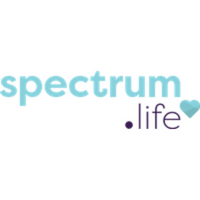3 ways to use data to identify changing employee benefits needs
Different HR solutions have varying reporting functions. Data can be used to improve employee experiences, help decision making, optimise general processes and improve talent retention.
Anonymous population reporting removes personally identifiable information while retaining an element of core information to be used without fear of invading anyone’s privacy (ie your employees’).
When investing in a wellbeing or benefits provider, ensure all ethical considerations have been addressed and the end users are protected and respected.
Safety and privacy are key concerns within the industry when using digital health, digital mental health or wellbeing solutions, given the recent surge of ransomware attacks.
Where to start to understand needs
It’s important to look at what is going on in the world at the moment and how it affects the workforce.
Employers and HR departments should start with the wider community to understand external pressures and trends affecting employees and their overall wellbeing needs.
Events like the cost-of-living crisis, the UK mental health recession and talent shortage have significant repercussions on employee needs in the workforce, and the baseline expectation from the employer has changed.
How do we keep employees satisfied and meet wellbeing needs?
External research can help direct employers/HR to any trends or factors to be considered when developing a wellbeing solution strategy. It is important to get insight on employees’ actual needs and not what HR or employers perceive based on their own research.
It’s astounding that 57% of employers offer the exact same benefits to all of their staff, with 18% of employers using seniority as guidance of what benefits are offered.
So, how can we determine employee wellbeing needs?
1) Risk profiling and demographics
In a benefits survey, 78% of employers said it would be valuable to have a better understanding of the risk profile of the health and wellbeing of their workforce. Risk profiling can be done from within your benefits solutions or externally. Anonymous feedback could be retained from questionnaires or surveys and distributed to the workforce annually. An employer/HR dept could integrate risk profiling into hiring procedures if the purpose of data collection was communicated to potential candidates.
Demographics can offer an insight into an organisation’s ‘employee footprint’. Collecting demographic data such as age or gender can help an employer or HR department realise the level of investment required.
For example, a large proportion of women over 40 would mean an increased need for menopause and menopause support policies. Investment in these types of services is high until no longer required – ensuring employees are properly supported in a time of great physiological and mental change.
Risk profiling takes into consideration other demographic factors. For example, employees over 45 with a sibling with type 2 diabetes; employees who don’t exercise more than three times a week or employees that gave birth to a baby that weighed more than 9lbs can be at a higher risk of developing diabetes.
Diabetes wellness resources and solutions (eg nutritional advice, access to recipes, screening services and digital gyms) can be offered for education, prevention and protection of wellbeing. Risk profiling enables an element of proactive care. However, for small workforces anonymity may be difficult to maintain.
2. Use trends/population reporting
General use trends and analytics will help employers see which services are most required or common pain points for employees that need to be addressed. Eg, if childcare support benefits are not being used, but calls for financial advice are increased, investment into childcare support could be reduced while financial wellbeing benefits are enhanced.
Looking at use enables better resource management, negating duplication of solutions or over-investing in undesired benefits.
3. Widespread feedback/culture implementation
Reporting functions are limited from general employee wellbeing solutions, as data is personal, sensitive and aims to protect privacy. Given the pressures faced by many employers, HR, managers and employees, wellbeing solutions should take a holistic approach to meet all needs for wherever an employee is on the health spectrum.
It is beneficial to have data insights and act upon them, but it is also crucial to listen to employee feedback and create an open, safe business culture where staff feel valued and aren’t afraid to speak up or ask for what they need.
Before making any decisions over the allocation of wellbeing resources, be careful not to negate an individual’s needs based on averages.
Supplied by REBA Associate Member, Spectrum Life
Supporting 4m+ lives in the corporate, education and insurance sectors with our health & wellbeing solutions.”








